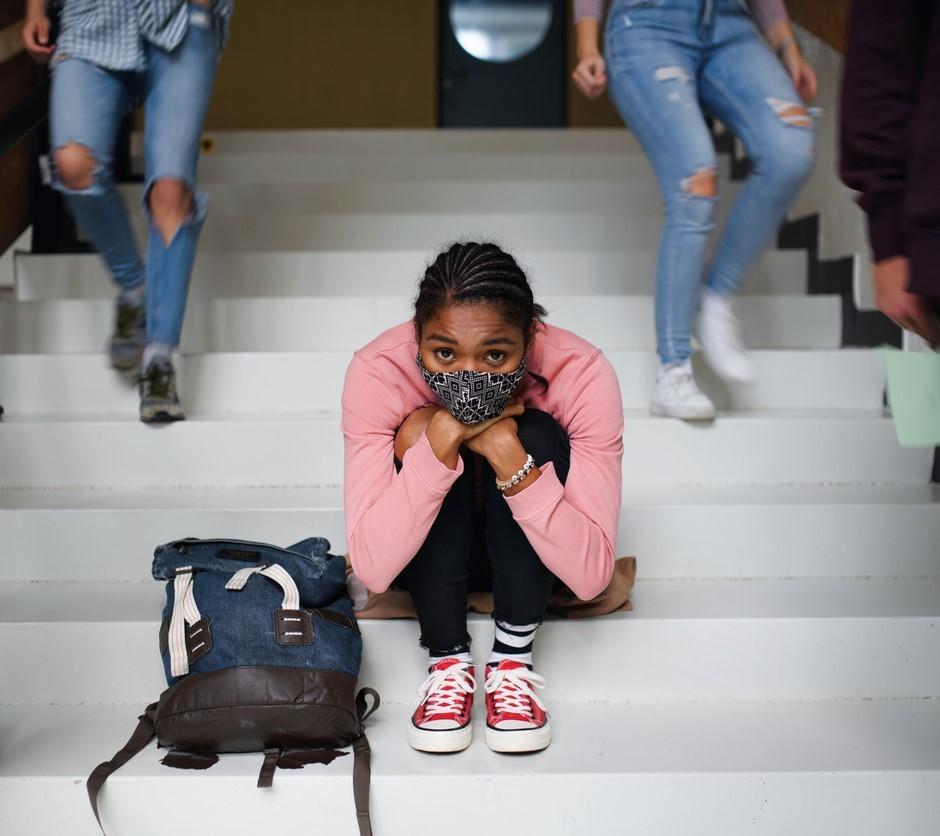A new study in JAMA Psychiatry shows emergency department (ED) visits and stays for mental health needs soared for adolescent females in the United States in the second year of the COVID-19 pandemic, rising by 22% when compared to the year before the pandemic.
In general, the authors of the study also found a significant increase (72%) in the percentage of youth in EDs with long onboarding (waiting in an ED or medical inpatient unit) times.
The study used the health insurance claims of 4.1 million US enrollees between March 2019 and February 2022. Children ages 5 to 17 were considered in the final analysis. In total, there were 17,614 and 16,815 youth with at least one mental health ED visit in the baseline year (March 2019 to February 2020) and pandemic year 2 (March 2021 to February 2022), respectively.
Suicidal ideation, attempts rose by 40%
Comparing the baseline to pandemic year 2, there was a 6.7% increase in youth with any mental health ED visits (95% confidence interval [CI], 4.7% to 8.8%). Females had the largest increase in visits, at 22.1%. Male adolescent ED visits declined in the second pandemic year.
Among females, suicidal ideation, suicide attempt, or self-injury increased 43.6%.
"Among females, suicidal ideation, suicide attempt, or self-injury increased 43.6%," the authors said. Eating disorder visits increased by 120.4%.
"Multiple factors likely contribute to females' increase in mental distress including higher pandemic-related stress, more pandemic-related disruptions to school, and emotional abuse in the home. This may explain why the increase in ED visits for females was primarily driven by suicidal ideation, suicide attempt, and self-harm," the authors said.
The fraction of ED visits that resulted in a psychiatric admission increased by 8.4% (95% CI, 5.5% to 11.2%).
"One of the most concerning findings was the dramatic increase in the number of adolescents waiting multiple days in the emergency room before being admitted to facilities that can provide the level of treatment they need," said study author Haiden Huskamp, PhD, of Harvard University in a news release.
The authors of the study said even before the pandemic, US adolescents were visiting the ED more for mental health crises. In 2021, they write, 20% of high school students seriously considered suicide, and 9% attempted suicide.
One of the most concerning findings was the dramatic increase in the number of adolescents waiting multiple days in the emergency room.
In a commentary, Kenneth B. Wells, MD, MPH, said the findings show the country needs a comprehensive strategy to fight the mental health crisis facing youth.
Wells offers several approaches, including a preventative approach that uses "digital informational resources for stress reduction for the public and for health care professionals tailored to adolescents and parents of younger children. Such resources are becoming more available," he writes.
Mental health ED visits less flexible
A second study in JAMA Network Open also showed that mental health visits to EDs across the United States decreased less than non-mental health visits during the pandemic, showing mental health patients had less flexible needs even during public health emergencies.
The study was based on weekly tallies of mental health and non-mental health ED visits at 10 major US city regions. Prepandemic baseline levels were established from 2019 data, and time trends of these patterns were examined in the corresponding weeks of 2020 and 2021.
The mean total number of ED visits decreased by 45,117 (95% CI, −67 ,499 to −22, 735) visits per region per week (a 39% decrease) in the weeks after the pandemic onset, compared with corresponding weeks in 2019. But mental health visits only showed a 23% decrease. Of note, the absolute number of mental health ED presentations did not return to 2019 baseline levels, whereas the total number of ED presentations did return to 2019 baseline levels by 2021.
[Mental health]-related visits were less elastic and did not return to prepandemic levels.
"Although total ED visits decreased sharply with the pandemic onset in 2020 and rebounded quickly to prepandemic levels in 2021, MH-related visits were less elastic and did not return to prepandemic levels. This finding suggests that patients with non-MH conditions may have a greater ability to adapt to public health emergencies, such as a global pandemic, than those with MH conditions," the authors write.
In a commentary on the study, Tyler R. Black, BSc, MD, writes the findings add to the literature of how the pandemic affected mental health. Black warned that scientific findings on mental health trends, however, have been far from homogenous.
"This heterogeneity of outcomes, ranging from positive to negative, is often hidden in public and scientific discussions," he writes.



















